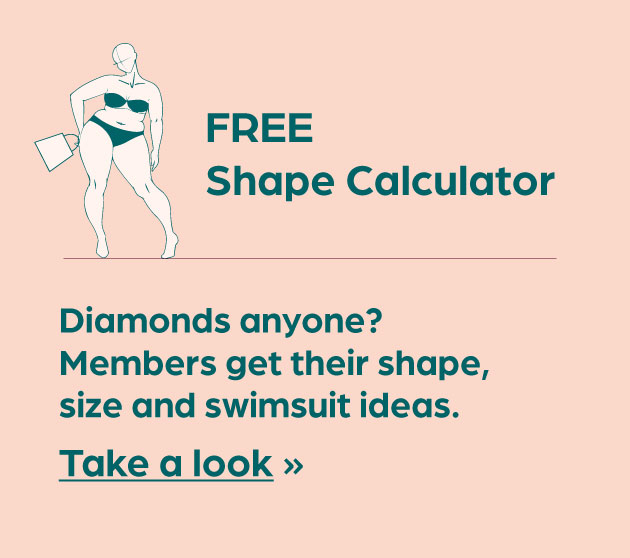There are certain risk factors that are thought to increase our chances of being in poor bone health. When we're talking poor bone health, we're talking being osteopenic or osteoporotic. Both increase the potential of breaking bones.
If you know the risks, then you're aware. And awareness is the first step to having the conversation with your health team to deepen you understanding of how it may affect you. Risks factors are not absolute. They are not your destiny. Think of them as influencers. They influence your bone health outcome more than other factors.
"Having a risk factor, or even several, does not mean that you will have osteoporosis. However, the more risk factors you have, the greater your chance of developing the disease and also, the greater the level of each risk factor, the greater the risk." (International Osteoporosis Foundation).
Risk Factors
I've divided them in to Risk Factors You Can Change or have a greater influence over changing and Risk Factors You Can't Change or have a little or no influence over.
Those you can change are generally lifestyle risks because we have more control over how we live - they're variable in nature. That's where being your own bone health advocate and doing what is understood to promote better bone health, really comes into its own.
Risk Factors You Can Change
By eliminating or reducing these lifestyle driven risk factors, the likelihood of having poor bone health is also reduced.
Smoking: "Smoking slows down the cells that build bone in your body. If you're a woman, smoking also increases your chances of an earlier menopause. Postmenopausal women have an increased risk of osteoporosis and breaking a bone." (Royal Osteoporosis Society).
Drinking too much alcohol: "Alcohol affects the cells that build and break down bone. It also makes you unsteady on your feet, making you more likely to trip, fall and break a bone." (Royal Osteoporosis Society).
Calcium and Vitamin D: "Low calcium intake: Adults require 1,000 mg daily (preferably through diet), increasing to 1,300 mg daily for women over 50 and men over 70. Low vitamin D levels: Vitamin D is needed to absorb calcium. Lack of sun exposure can lead to low vitamin D levels." (Healthy Bones Australia).
Low Levels of Physical Activity:
Movement is medicine. We all know that. For overall health...including bones. Exercises that load bones (like lifting weights and jumping) are what will strengthen them. We will cover this off in a future edition of this series where we talk specifically about the vital role exercise, particularly the right kind of exercise will help bone health and the right amount - not too little and not too much.
Risk Factors You Can't Change
Family History: "Poor bone health can be hereditary. Check if anyone in your family (particularly parents or siblings) has been diagnosed with osteoporosis. This includes parents or siblings who have experienced a broken bone (from a minor fall) or rapidly lost height, which can indicate being at risk of osteoporosis." (Healthy Bones Australia).
"Osteoporosis has been shown in studies to have a large genetic component: a parental history of osteoporosis or of fracture (particularly a family history of hip fracture) is associated with an increased risk of fracture that is independent of bone mineral density. A meta-analysis has shown the increases in risk ratios to be of 17%, 18% and 49% for any fracture, any osteoporosis fracture and hip fracture, respectively, in men and women combined [2]." (International Osteoporosis Foundation).
Age: "The majority of hip fractures (90%) occur in people aged 50 years or older. This is partly due to reduced bone mineral density as we age. But age can also be a risk factor independent of bone mineral density. In other words, even older adults with normal bone mineral density are more likely to suffer a fracture than younger people [1]." (International Osteoporosis Foundation).
Being Female: "Osteoporosis and broken bones are more common in women than men. Your bones lose strength at a faster rate after the menopause. This is because levels of oestrogen (the female sex hormone that helps keep bones strong) decrease. Women tend to live longer, on average, so are more likely to live with the lower bone strength that comes with age.
Women tend to have smaller bones than men. Having bigger bones is found to reduce the risk of broken bones." (Royal Osteoporosis Society)
Menopause:
Being female comes with the menopause transition and this is when we see the greatest decline in bone health for women. Maryann Jacobsen writes brilliant articles on Substack. I've referenced her work in the Read section below. This is from one of her recent editions that highlights that drop off of bone mineral density (black line) as it relates to oestrogen falling (the blue line) with the final menstrual period (FMP) as the 'measuring point'; through the menopause transition from peri-menopause to post-menopause.
Q: Knowing this, when would you think it would be a good time to understand your bone health status?
And this from the International Osteoporosis Foundation, "Post-menopausal women, and those who have had their ovaries removed, must be particularly vigilant about their bone health. Women who experience menopause before age 40 years have a higher risk of any fracture than women reporting menopause at an older age. This effect is not altered for women treated with osteoporosis therapies, suggesting that early age of menopause is an independent contributor to postmenopausal fracture risk.
Hysterectomy, if accompanied by removal of the ovaries, may also increase the risk for osteoporosis because of oestrogen loss. Investigators have also evaluated the impact of hysterectomy on long-term fracture risk. About a 20% increase in overall fracture risk is observed, but no significant effect on the typical osteoporotic fractures, defined as hip, wrist or spine fractures, collectively."
A History of Broken Bones: "If you've broken bones easily in the past, including in the spine, you are much more likely to break a bone in the future. Research shows that after one broken bone you are two to three times more likely to have another." (Royal Osteoporosis Society)
Medical Conditions That Increase Risk
This information is from the Bone Health and Osteoporosis Foundation. The list is long which goes to highlight how important it is to keep bone health on the radar.
It also highlights the need to have the conversations with your health team if you've been diagnosed with one or more of these conditions and to get the right advice to help you with your bone health.
I had one of these conditions listed - hyperparathyroidism. I have recently changed endocrinologists because I felt I wasn't being offered the most current and appropriate treatment options for my bone health.
Autoimmune Disorders:
- Rheumatoid arthritis (RA)
- Lupus
- Multiple sclerosis
- Ankylosing spondylitis
Digestive and Gastrointestinal Disorders:
- Celiac disease
- Inflammatory bowel disease (IBD)
- Weight loss surgery
Medical Procedures:
- Gastrectomy
- Gastrointestinal bypass procedures
Cancer:
- Breast cancer
- Prostate cancer
Hematologic/Blood Disorders:
- Leukemia and lymphoma
- Multiple myeloma
- Sickle cell disease
Neurological/Nervous System Disorders:
- Stroke
- Parkinson's disease
- Multiple Sclerosis (MS)
- Spinal cord injuries
Blood and bone marrow disorders:
- Thalassemia
Mental Illness:
- Depression
- Eating disorders
Endocrine/Hormonal Disorders:
- Diabetes
- Hyperparathyroidism
- Hyperthyroidism
- Cushing's syndrome
- Thyrotoxicosis
- Irregular periods
- Premature menopause
- Low levels of testosterone and estrogen in men
Other Diseases and Conditions:
- AIDS/HIV
- Chronic obstructive pulmonary disease (COPD), including emphysema
- Female athlete triad (includes loss of menstrual periods, an eating disorder and excessive exercise)
- Chronic kidney disease
- Liver disease, including biliary cirrhosis
- Organ transplants
- Polio and post-polio syndrome
- Poor diet, including malnutrition
- Scoliosis
- Weight loss
Medications that Impact Bone Health
Some medications can impact bone health. Corticosteroids – commonly used for asthma, rheumatoid arthritis or other inflammatory conditions seem to get the most attention in the information I've seen.
The Bone Health and Osteoporosis Foundation list many medications that may impact bone health. I have chosen not to list them here because a. this edition is already very lengthy and b. talking medications is getting very personal and is very much a risk benefit equation. If you are curious, here is the link to what they list.
Final Thoughts
That was big. I hope you found it helpful. This is a BIG topic that weaves a massive web. My intention with sharing this information is awareness. For you to then take in what sparks your curiosity so you can read further yourself and more importantly, have the conversations with your health team about it.
The gap in bone health is HUGE. And it starts with the basics...early diagnosis so that you can manage it pro-actively and feel empowered!
How lifestyle choices as well as by simply being a menopausal woman increases our risk of poor bone health. How other conditions we may have and the medications we're on to treat them can affect our bone health too.
Stay vigilant. Be aware. Have your bone health on your radar.
Because girl, you're just getting started!
Remember the contents of this are meant for education purposes only. This newsletter is here to spark thoughts and conversations not to give advice. Conversation not consultation. I'm not a doctor or a qualified health professional offering advice. That's on you to glean from your health team and determine what's best for you.
Anita xx
p.s. Scroll to look out for other blog posts in my Bone Health Series. They're near by so it won't take long to find them :)
===========
OTHER WAYS TO CATCH ANITA:
Podcast: Midlife Unfiltered - The Season of Me.
- Watch and listen to it on Substack (you don't have to have an account to do so. But if you want to know when we post new stuff, subscribe while you're there!). We're also on YouTube. or
- Listen to it where ever your like to listen to your podcasts.
Subscribe to my weekly newsletter Midlife Mojo
I hand curate Midlife Mojo for you with love. Finding recent research on topics that help to step into and through midlife with power. To bring awareness and encourage you to be your own health advocate and ask the questions of your health team to get the outcomes that intuitively you know are the right ones for you. Subscribe here.



